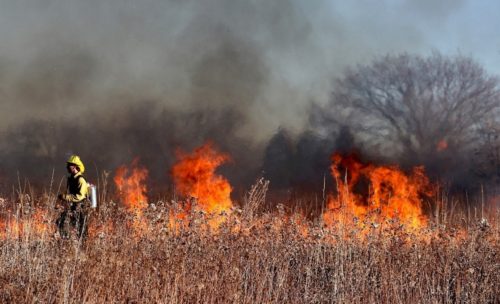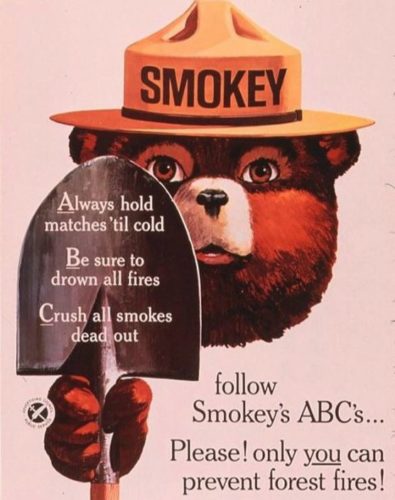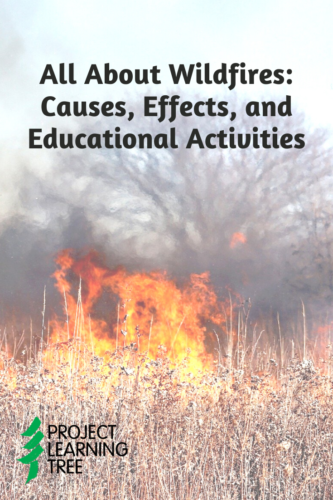
Wildfires in the United States have become steadily more common in the last few decades. And while some wildfires naturally occur and help keep forest ecosystems healthy, an astounding 84% of wildfires are caused by human-related activities. Wildfires not only devastate lives and destroy property—they also accelerate climate change.
There is an important link between wildfire frequency and intensity and varying forest management practices. A history of fire suppression, or not allowing natural fires to occur, has led to a dangerous “fuel load”, or a buildup in the amount of dead brush and tree debris in many forests. Lack of active forest management can also contribute to a prevalence of invasive species that thrive in current climactic conditions and contribute to unexpected fire patterns. Without forest management to mitigate these conditions, the potential for dangerous fires can mount. Proper management that increases overall forest health (including reducing fuel loads and limiting the spread of invasive species) can decrease the likelihood of damage from catastrophic fire.
Forest management standards that support increasing fire resiliency and awareness (such as those recently added to the updated Sustainable Forestry Initiative’s Forest Management Standard), are critical to limit the susceptibility of forests to undesirable impacts of wildfire—and to raise community awareness of wildfire benefits, risks, and minimization measures.
Whether you are in peak fire season in North America (summer), or any other time of year, it’s always a great time to make your students aware of the differences between healthy and damaging fire, the natural and unnatural ways fires start and spread, the effect of wildfires on the environment, and how to manage and prevent them.
This article covers these topics and includes classroom activities for all grade levels that will give your students a deeper understanding of wildfires.
Forest Literacy and Wildfire
When planning your wildfire lesson, be sure to check out Project Learning Tree’s new Nature of Fire activity collection as well as our Forest Literacy Framework, which breaks down important forest concepts and “Hot Topic” environmental issues (like wildfire) your students should know before they graduate high school.
The Forest Literacy Framework is organized by grade level and has been researched and advised by experts to assist your lesson planning on these complex environmental topics.
Forest literacy activities on the topic of wildfire can help address questions such as:
- What role does wildfire play in forest ecosystems?
- In what ways does climate change affect the frequency and intensity of wildfire?
- How can we manage forests to maximize the benefits and minimize the negative effects of wildfire?
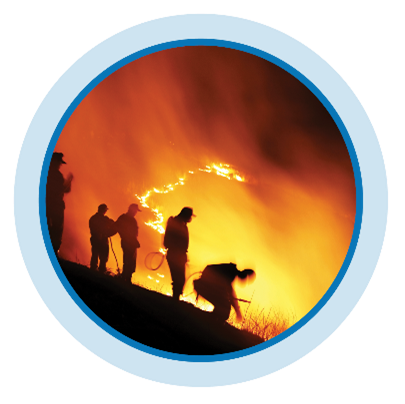 What Environmental Conditions Promote Wildfires?
What Environmental Conditions Promote Wildfires?
Climate change has led to more extreme weather in the last few decades, including droughts. Currently, most of the country is in the “most severe drought in recorded history.” The hotter and drier the environment becomes due to rising temperatures, the higher the risk of wildfires starting from natural or human-related activity.
Intense heat and dry vegetation readily fuel a wildfire that can burn out of control. And when there’s strong wind, it creates ideal conditions for fires to become widespread.
Many forested areas are now experiencing prolonged fire seasons as climate change increases the severity and frequency of wildfires. More than a billion acres are at risk of fire each year in the United States, according to the US Forest Service.
Fire’s Healthy Role in the Forest Ecosystem
Like all ecosystems, forests are in a constant state of change. Plant communities change over time in a process called succession. When a fire occurs in a forest, it may clear space and bring in sunlight, resulting in a continually changing mix of species. Project Learning Tree’s activity Nothing Succeeds Like Succession, found in our new Nature of Fire activity collection and Explore Your Environment: K-8 Activity Guide, is a great resource for helping students learn about natural patterns of change that take place over time in a forest or other ecosystem.
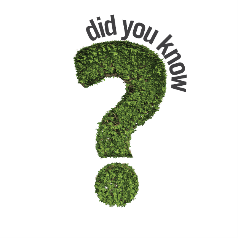
Forest fires are sometimes welcome. Fires that are low intensity and occur naturally are a necessary—and unavoidable—part of what fuels a forest’s evolution and health. These fires are mainly caused by lightning that strikes trees or the ground.
Prescribed fire is a planned fire; it is also sometimes called a “controlled burn” or “prescribed burn,” and is one of the most important tools used to manage fire and forests today. Prescribed fire clears out fuel sources that would otherwise promote quickly-spreading fire, making the forest healthier and more likely to withstand wildfire season. The heat of prescribed burns also promotes the regrowth and reproduction of some tree species known as pyrophilic trees.
Here are a few incredible ways that fire adds to a forest’s vitality:
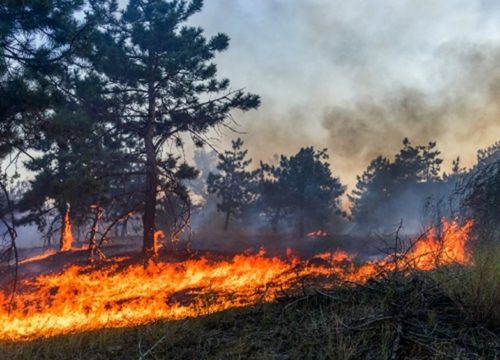 Forest floor cleanup
Forest floor cleanup
Smaller fires can remove and reduce understory grass, brush, and trees that can fuel larger and more severe wildfires. Low intensity fire consumes dead and decaying vegetation and invasive species. It also results in less undergrowth coating the forest floor that could help a potential wildfire spread and completely wipe out the forest.
Healthy fire also destroys smaller or weaker vegetation and sends their nutrients more quickly into the ground. As a result, the stronger trees and plants that stick around get more sunlight and nutrients to become even healthier, enabling their species to evolve.
With fewer plant roots taking up space on the forest floor, more water becomes available for other vegetation and wildlife, and any extra flows into streams and recharges aquifers.
It ensures the survival of species
Certain species of trees and other plants rely on fire to come around every few years for their seeds to germinate.
For example, lodgepole and Jack pine trees are only able to release seeds when their flammable, resin-coated pinecones burst open in extreme heat. Other parts of these plants are fire-resistant so they can survive. Some trees even have flammable leaves to encourage fire since it helps them continue for generations.
Disease and harmful insect removal
Disease and insect infestation kill more trees every year than fire. So, when a fire kills off a harmful bark beetle infestation, for instance, it kills off some of the pests or disease, and gives the forest a chance to recover.
Shelter, water, and nutrients increase
When fire removes thick undergrowth, it clears the way for new grasses and shrubs that provide food and shelter for wildlife. Fire also maintains wide-open meadows that animals like deer and meadowlarks like to feed and roam in.
Fire is an inevitable part of what makes a forest a forest. However, climate change and other human activity has been enabling even naturally-caused fires to occur too frequently and intensely.
Historically, different regions of North America had distinct “fire seasons” when wildland fires were more likely to occur. Conditions such as earlier winter snow melt, drought, and tree mortality from insect infestation have extended the traditional fire season in many areas. Wildfires now sometimes occur year-round, forcing some forest managers to consider the “fire year” when making fire management decisions.
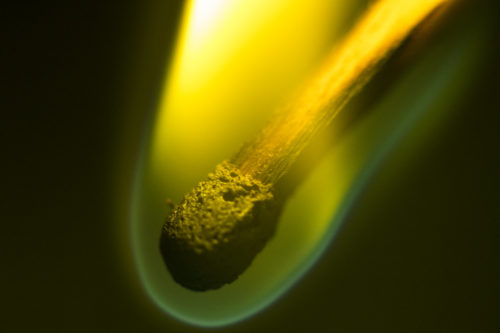
How Does Human Activity Start Wildfires?
A whopping 95% of the fires raging in California are started by humans, according to the California Department of Forestry and Fire Protection. All it takes is just one spark to kick off a wildfire that spreads over entire forests and multiple states.
This means that all humans—no matter what age—can examine how they contribute to wildfires to advance their prevention.
The following list explains how human activity and equipment can spark wildfires:
- Vehicles and tools scraping hard surfaces. Anything that can cause a spark and has the potential to spread outdoors, especially in ideal fire weather, and create a wildfire. In 2018, two massive California wildfires began with sparks caused by a stake hitting the ground in 100-degree weather and a flat tire rim scraping against the road. Some other common causes of wildfires are vehicle collisions, metal mower or weed-whacking blades striking rocks, and chains hanging off trucks that scrape pavement.
- Power lines and other electrical equipment. Power lines often break in strong winds, and sparks spread dangerously fast with faster winds and dry vegetation. Outlets and appliances can also spark or overheat and cause electrical fires that escalate.
- Debris burning. Fires lit for agricultural purposes like clearing land or removing crop residue make up 29% of wildfires nationally.
- Campfires. Campfires, especially illegal, unattended, or poorly extinguished ones, have the potential to burn thousands of acres. And if the fire warning is high, that really spells trouble.
- Arson. People sometimes intentionally burn property or nature.
- Cigarettes and fireworks. People should be mindful to practice safe use and disposal of both cigarette butts and fireworks, as even small heat sources can ignite dry vegetation and lead to huge wildfires.
Wildfire’s Unhealthy Effects
Fires that rage out of control have many devastating effects on human, animal, and plant life.
Smoke from large fires negatively affects air quality and can damage the lungs of people thousands of miles away. Wildfire also threatens water quality, destroys animal habitat, and leaves behind stripped land that can easily become eroded and create mudslides.
Wildfires also burn up the carbon stored in trees and soil, releasing large amounts of smoke, methane, and carbon dioxide into the atmosphere, which increase overall temperatures.
Forests eventually recover from wildfires, but it can take a long time.
How are Wildfires Managed?
The US Forest Service, state agencies, private companies, and individuals who own forestland all help to minimize the likelihood and severity of wildfires with prescribed burning, monitoring natural fires, and removing or trimming unwanted vegetation.
Regular, smaller prescribed burns clear a lot of underbrush that a wildfire could otherwise use as fuel and potentially result in the wildfire becoming too large to manage.
 Closely spaced small trees and branches in the understory can also act as ladders that allow fire to spread more easily into the upper canopy. The resulting “crown” fire can become extreme in certain forest types and weather conditions. Pruning and thinning trees that are too close together is another forest management technique that can be used in some areas to help reduce the risk of wildfire.
Closely spaced small trees and branches in the understory can also act as ladders that allow fire to spread more easily into the upper canopy. The resulting “crown” fire can become extreme in certain forest types and weather conditions. Pruning and thinning trees that are too close together is another forest management technique that can be used in some areas to help reduce the risk of wildfire.
Firebreaks can also act as buffer zones to stop more modest fires from spreading. They exist naturally or artificially and include large rock outcroppings, roads, bodies of water like lakes and rivers, and canyons.
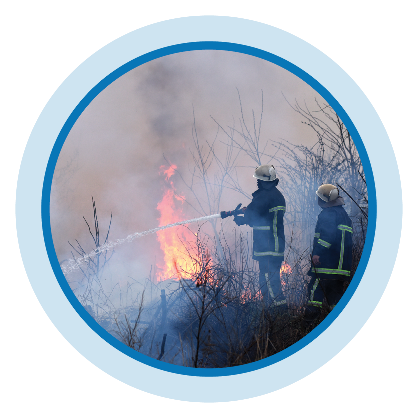
Forest industry organizations and the Forest Service managing large tracts of forestland employ firefighters on the ground and aerial firefighting crafts to manage both prescribed fires and wildfires. These brave responders step in to fight the more than 73,000 wildfires that burn an average of seven million acres every year across the US.
Help your students learn more about what a wildland firefighting job entails, as well as other green career opportunities that focus on the safe use of fire, in Project Learning Tree’s Green Jobs: Exploring Forest Careers guide designed for educators of youth ages 12-25. For grades K-8, check out all the Career Corners in PLT’s new Explore Your Environment: K-8 Activity Guide that introduce students to forest-related careers, like these:
 WILDLAND FIREFIGHTERS protect and maintain the health of the forest by preventing, controlling, and putting out forest fires, and lighting and managing prescribed burns. They may also talk to the public about ways they can help prevent fires.
WILDLAND FIREFIGHTERS protect and maintain the health of the forest by preventing, controlling, and putting out forest fires, and lighting and managing prescribed burns. They may also talk to the public about ways they can help prevent fires.
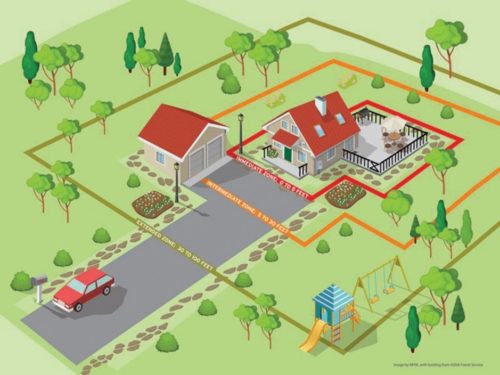
What Can Individuals Do to Protect Homes and Communities?
Wildfires affect everyone, but we all can play a big part in preventing them! Here’s how to prevent wildfires and protect your home and community.
Use Project Learning Tree’s checklist to assess wildfire safety in three zones around your home. This Student Page accompanies the Living with Fire activity in PLT’s Nature of Fire activity collection and Explore Your Environment: K-8 Activity Guide.
Heed Smokey Bear’s 5 rules for wildfire prevention:
- Only YOU can prevent wildfires.
- Always be careful with fire.
- Never play with matches or lighters.
- Always watch your campfire.
- Make sure your campfire is completely out before leaving it.
And keep in mind the phrase “If it’s too hot to touch, it’s too hot to leave.”
Here are some more tips to help prevent wildfires:
- Avoid burning or performing activities that create sparks (like lighting off fireworks) when fire danger is high or when there is an open fire restriction in your area.
- Don’t burn trash, leaves, or other brush that can easily get carried off on windy days.
- Follow all local or park guidelines before burning, and always check firework restrictions.
- Keep vegetation cleared away from the fire area and use rocks or campfire rings to keep fuel contained. When burning large piles, you will need to clear away more space.
- When grilling, follow these safety guidelines set by the National Fire Protection Association and download their free grilling safety tip sheet. Grills should never be left unattended, and charcoal should be completely cooled off before you dispose of it in a metal container.
- Avoid burning highly flammable items like aerosol cans.
- Always have a water source ready like a big bucket, hose, or wet towel in case a fire gets out of hand.
- Notify local authorities if you witness a wildfire starting. This helpful video gives great tips on how to accurately spot and report wildfire smoke so help comes faster.
- Visit the National Fire Protection Association’s website to learn what Firewise protocols you can take to keep your home safer from wildfire, and download their free fact sheet. A few measures include choosing fire-resistant building materials, using gravel or rocks versus flammable mulches, and removing flammable materials from under porches or beside your house.
- Form a Firewise Site with your neighbors to get your community assessed for fire risk, create an action plan to reduce risks, and follow through. You can share with neighbors what you’ve learned about fire prevention and how to make homes more fire-safe.
Activities to (Safely) Increase Your Class’ Understanding of Fire
Here is a list of engaging activities for your class to teach about the role fire plays in healthy forest ecosystems and fire management. They’ll learn how fires are created, how to contain them, how to prevent them, plus what we can do as individuals to protect our homes and communities from catastrophic wildfires.
Learn about plants that depend on fire. Wildland fire can have many environmental benefits, like enabling fire-adapted pinecones to release their seeds. Use Project Learning Tree’s Have Seeds, Will Travel activity found in Project Learning Tree’s Explore Your Environment: K-8 Activity Guide with younger students to help them learn about seed dispersal, including plants that depend on fire for dispersal. Their seeds are tough enough to survive a brief exposure to fire, and they benefit when fire burns away the undergrowth and clears the ground for them to grow.
Grades K-2
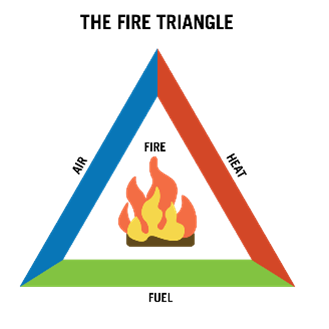
What are the three elements a fire needs to burn? In the activity Living with Fire found in Project Learning Tree’s Nature of Fire activity collection and Explore Your Environment: K-8 Activity Guide, students will learn about the “fire triangle” and how eliminating one (or more) elements can help prevent or control a fire. You’ll need a tea light candle or a birthday candle, modeling clay, a glass jar with a lid, and a set of matches.
Grades 6-8
Teach students the difference between a wildfire and a prescribed fire. From a forest fire probability model to the Plastic Sphere Dispenser, these hands-on STEM challenges include suggested enhancements to use with PLT’s Living with Fire activity. Students will delve into the differences between prescribed fire as a forest management tool vs. a wildfire, an unplanned event which often results in landscape devastation. Further resources that go well with this activity include a fire facts Jeopardy-style game and a 13-year case study of fire in the Rockies from Montana State University.
Grades 6-8
Dig into this list of wildfire prevention lesson plans for information about Smokey Bear and his fire prevention message. Get a feel for what prescribed burns look like through videos, pamphlets, and more resources that take a deeper dive into learning about wildfire prevention and management.
All grade levels
Learn and predict how a changing climate could influence future wildfires with this creative lesson from Natural Inquirer. Students can even devise new technology that they think might fight wildfires in the year 2050.
Grades 5-12
Challenge students to research ways to make homes in your community safer from wildfires. You could provide them with Project Learning Tree’s Wildfire Safety Checklist student page. This version suitable for grades 6-8 accompanies the Living with Fire activity found in PLT’s Explore Your Environment: K-8 Activity Guide and includes the Career Corner highlighted below. This version for grades 9-12 accompanies PLT’s activity The Nature of Fire from Exploring Environmental Issues: Focus on Forests.
 FIRE PREVENTION SPECIALISTS work to reduce the risk and extent of forest fires. They may inspect outdoor public and residential areas for fire hazards, enforce fire regulations, and recommend fire prevention measures.
FIRE PREVENTION SPECIALISTS work to reduce the risk and extent of forest fires. They may inspect outdoor public and residential areas for fire hazards, enforce fire regulations, and recommend fire prevention measures.
Grades 6-12
Build a fire. If this kind of field trip is possible, go with your class to a park or somewhere with an established fire ring. You can also work with your school or local nature center if you want your class to build your own. First, make sure you are familiar with Smokey Bear’s campfire safety guidelines, heed any fire safety guidelines outlined above in this article, and by your school or location.
Demonstrate how to build the fire, or have the kids gather wood, and experiment with building different cabin foundations themselves. When you show them the ropes of how to safely build, maintain, and extinguish a fire, children gain an essential skill for life! Celebrate the occasion with hot dogs and s’mores!
Grades 3-6
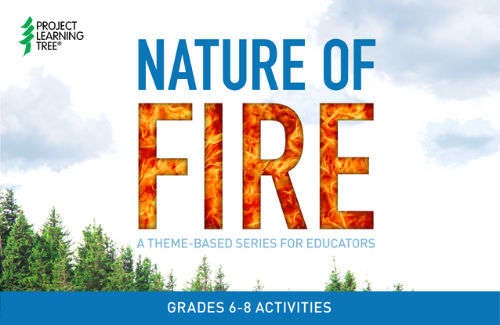
Investigate wildfire and ecosystem change. Help young people gain an awareness of fire management, learn about ways to mitigate wildfire damage, and discover changes in our environment with PLT’s downloadable Nature of Fire activity collection, which includes three fun activities for educators of middle school students.
Grades 6-8
Plan an imaginary camping trip. Split your class into groups and task each with planning an imaginary camping trip. What will they need to be aware of, check, and perform to keep their campfire safe? You can also tell them which part of the country they will be in so they can research local weather conditions, restrictions, and burning ordinances. Kids can be creative and take turns presenting their camping fire safety plans in front of the class.
Grades 3-8
High school activities that support fire education. Explore factors, like fire, that shape the development of forests with Project Learning Tree’s Exploring Environmental Issues: Focus on Forests secondary module. Sustainably managed forests can reduce fire risk, advance ecosystem function and provide a range of important benefits, including pest management and clean air and water. Using activities such as PLT’s Story of Succession and The Nature of Fire, students will learn about the role of fire in forest ecosystems, and understand why healthy forests are more likely to withstand the effects of wildfire. They’ll examine issues of fire in the wildland-urban interface and conduct a wildfire safety assessment in their community.
Grades 9-12


